You might not realize it, but what you throw away in your trash can can is probably full of survival gear.
Everyday items we throw away—plastic bottles, cardboard, old clothes, even food scraps—can become valuable tools when things go south. In a post-collapse world, the ability to repurpose what others see as waste will set you apart. Not only can these items help you survive, they can also be used to create warmth, fuel, security, and even deterrents to keep looters at bay.
Let’s look at 10 common “throwaways” and exactly how they can serve you in a survival situation.
Plastic Bottles
Plastic bottles are one of the most versatile and underappreciated survival tools. Lightweight, durable, and easy to stash, they can serve a surprising number of purposes when you’re off-grid or living in a survival situation.
What to do with them:
- Build DIY water filters using gravel, sand, and charcoal
- Create solar stills for distillation to make undrinkable water safe
- Cut into funnels, scoops, or irrigation drip systems
- Use for seed starting or waterproof storage for matches, rice, or first-aid kits
- Make lanterns by diffusing light with water-filled bottles and flashlights
If you want a more advanced water filtration system, you can turn to a DIY water generator such as The Water Freedom System. It’s based on declassified U.S. Army blueprints and has proven its efficiency on battlefields in some of the world’s driest deserts.
The good news is that you can assemble such a system in just a few hours, using simple components. Many of them might already be lying around your household and will be listed further in this article. Check out the plans here and get your own atmospheric water generator, freeing yourself from dependence on the public grid or the supermarket.
Aluminum Cans
Aluminum cans aren’t just recyclable—they’re a prepper’s best friend. Lightweight and malleable, they can be reshaped and reused in dozens of practical ways.
What to do with them:
- Build mini rocket stoves or alcohol burners for cooking without electricity
- Boil water or cook food in a pinch
- Use shiny surfaces to reflect light or signal for help
- Cut into fishhooks, wind chimes for perimeter alerts, or small cutting tools
- Make spoon or utensil sets for bug-out bags
Food Scraps
In a world where every calorie counts, food scraps are far from garbage. Bones, peels, fats, and even used coffee grounds all have second lives.
What to do with them:
- Boil bones for nutrient-rich broth that stretches food supplies
- Render fat into tallow or lard for cooking, waterproofing, or making candles
- Regrow vegetables like green onions, garlic, potatoes, and lettuce on a windowsill
- Dry citrus peels for bug-repelling fire starters or DIY cleaning solutions
- Compost for garden soil enrichment if you’re building long-term food security
Broken Electronics
Even if an electronic device stops working, it’s not worthless. Inside those plastic shells are valuable components that can be repurposed or salvaged for energy, security, or communication.
What to do with them:
- Salvage copper wires for snare traps or makeshift antennas
- Repurpose motors into hand-crank generators to power small devices
- Build perimeter alarms using buzzers and sensors
- Use battery cells for emergency lighting or to revive other devices temporarily
- Strip resistors, switches, and circuits for DIY off-grid power systems
Many of the components from broken electronics can be reused to build communication systems that will still work even after an EMP. This is a subject that should be of utmost interest to you as well, since it could make the difference between finding your family or not—and ultimately, between life and death.
I learned how to set up a post-EMP communication system that works extremely well (I’ve already tested it), thanks to the detailed information and photos provided in A Navy SEAL’s Bug-In Guide. I highly recommend you check out this link and see what it involves.
Cardboard
Cardboard is easy to overlook, but it’s incredibly useful for both shelter and gardening. It insulates, burns well, and can be transformed into makeshift tools or surfaces.
What to do with it:
- Insulate windows, walls, and floors in a makeshift shelter
- Tear for tinder or soak in wax to make long-burning fire bricks
- Mulch garden beds to suppress weeds and retain moisture
- Use for blackout window coverings to avoid light leaks at night
- Create disposable work surfaces or templates for building projects
Used Cooking Oil
Used oil may be smelly and messy, but it’s a resource worth holding onto. It’s flammable, useful for cooking, and can even be traded if fuel becomes scarce.
What to do with it:
- Make oil lamps by pouring into jars with homemade wicks
- Soak cloth or cardboard in it to create long-burning torches or fire starters
- Use as fuel in modified diesel engines or homemade stoves
- Trade with others for goods or services
- Store in labeled, sealed containers to avoid confusion and contamination
If you’re like me and cook often, your household probably generates large amounts of used cooking oil. Today, recycling this product is generally encouraged, but I chose instead to turn to Amish techniques for storing and reusing oil.
Many of these methods are described above, while others can be found in detail in The Amish Ways Book. The Amish are true experts in conserving and maximizing resources. I’ve learned a great deal from them that has helped me save money. I wholeheartedly recommend getting this book (it’s available in physical format, of course) and keeping it close at hand!
Dryer Lint
What looks like a handful of fluff is actually an excellent fire starter. Dryer lint ignites quickly and can keep a flame going long enough to start larger tinder.
What to do with it:
- Mix with wax or petroleum jelly and pack into straws or egg cartons for homemade fire starters
- Use in small bundles for kindling in emergency stoves or campfires
- Stuff into gloves or boots for emergency insulation
- Add to bug-out kits or glove compartments for a lightweight ignition source
Glass Jars
Glass jars are more than kitchen storage—they’re reusable, sealable, and sterilizable. They can handle food, water, and even tools when stored properly.
What to do with them:
- Store dry goods like rice, beans, flour, salt, or sugar long-term
- Preserve food via water bath canning, pickling, or fermenting (like the Amish – learn more tips here)
- Create oil lamps using a wick and cooking oil
- Use as solar still collection vessels or to trap small pests
- Collect rainwater or measure liquids
Old Clothing
When fabric wears out, don’t toss it—repurpose it. Clothing can be deconstructed and rebuilt into all kinds of tools and comfort items.
What to do with it:
- Tear into strips for cordage, emergency bandages, or sling materials
- Use as insulation by stuffing into cracks or layering for warmth
- Craft homemade pillows, quilts, or sleeping pads
- Filter coarse debris out of water (not a substitute for purification!)
- Create bags, pouches, or patch existing garments
It’s very important to know how to use old clothes even in bugging out situations. For example, in The Wilderness Long-Term Survival Guide, Dr. Nicole Apelian explains how to make cordage in different ways, including by using the clothes you’re wearing.
It’s essential to understand these skills, as well as those related to insulation and creating bags and pouches. They could save your life in ways you might never expect—but you can learn them all right here.
Trash as Camouflage
Believe it or not, strategic use of trash can become a home defense system. Making your property look undesirable may keep you off the radar of desperate people.
What to do with it:
- Scatter broken furniture, empty boxes, or rusted tools in plain view
- Place old clothes and household junk to give the illusion of abandonment
- Black out windows with dirty cardboard or plastic
- Avoid cleaning up the yard to deter would-be looters
- Use junk cars or appliances as barriers or visual obstacles
Final Thoughts
The next time you’re tempted to toss something, ask yourself: could this help me survive?
The truth is, trash becomes treasure with the right mindset. Practice now, learn the uses, and when the time comes, you’ll be the one who sees solutions where others only see waste.
Survival isn’t just about what you have—it’s about what you can make from what you already have lying around.
If you don’t have a good place to store your reusable materials, you can always build your own root cellar. Don’t worry—it’s not complicated at all. All you need is a few free hours, some materials that cost less than a flat-screen TV, and this brilliant plan called “The Easy Cellar.” It’s nuclear-proof and EMP-proof!
You may also like:
Stop Throwing Away Used Cooking Oil! Do This Instead
The 100-year MEGADROUGHT Is Here. This Is What You Must Do (Video)
8 Household Items People Repurposed During the Great Depression

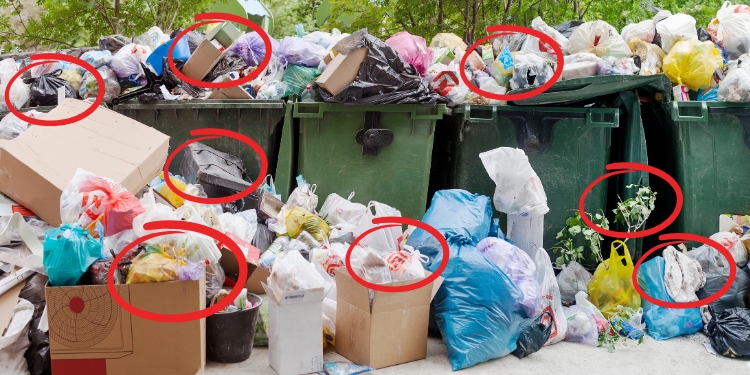
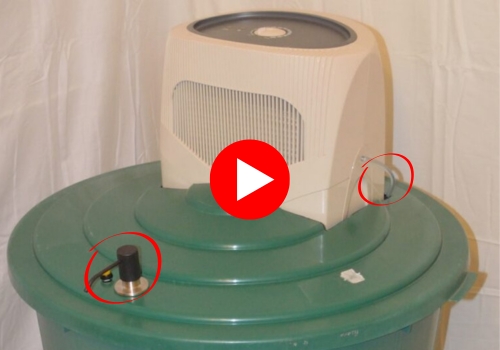

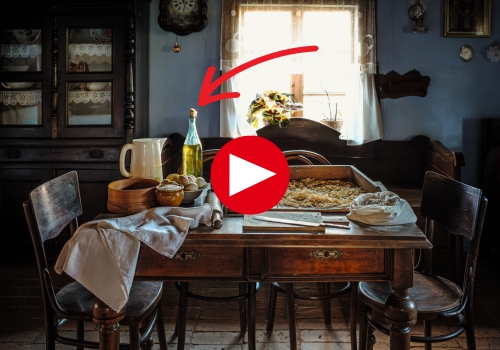
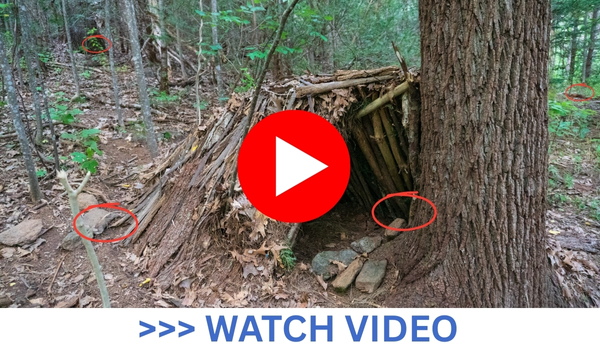








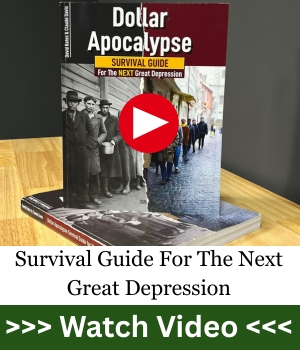



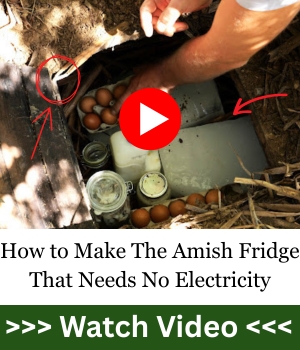

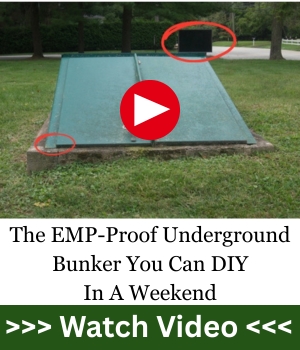






Some one should tell the Amish guy to put a “buy now” button on his page. 🤦
It’s a 2miles long, there should be buy buttons everywhere
I looked up and down it and gave up lookin for one 🤬
Well, I just purchased a suite of the newly required city trash bins. Blue for cans & bottles; green for paper and cardboard: brown for garden and kitchen compost, and black for everything else. That should make keeping all these things handy a piece of cake so long as I don’t take out the trash.
That’s actually a smart way to stay organized—turning those city trash bins into prep storage. Just make sure you don’t mix up the compost with the canned goods one day 😅. Jokes aside, it’s a neat example of using what you’ve already got.
Thank you, yes! What I like is that is doesn’t seem out of place or abnormal so no one would think twice about my preps being right out there in plain sight.
I’ve been reading this site for several years. This latest post has given some good information about things many people discard. I do recommend the three books listed. It is unfortunate that I cannot build the root cellar, as my backyard is concrete. I do grow quite a variety of fruits, vegetables, herbs, trees, and flowers in an assortment of pots, and in a greenhouse though. Never, ever give up, stay safe, and keep your gas tanks and pantries full. Best of luck to all.
Love your attitude—never give up. A root cellar isn’t the only way to store food, and you’re proof of that with your pots, greenhouse, and trees. A lot of folks are stuck with concrete yards, so hearing your success story is inspiring. Stay safe and keep growing!
I’ve enjoyed putting cold river water in large clear plastic bottles and setting them in the sun for a while to warm up…then give your hair a good washing with a little sampoo…then wash the rest off your body for a make shift shower in the middle of no where…very refreshing after a few days in the wild….look for ticks…
That’s a great trick—it’s basically the off-grid solar shower method. Cheap, effective, and no fancy gear required. And you’re 100% right about checking for ticks after being in the wild. Little details like that make all the difference.
Only so much trash or stuff you can keep
Be selective , clean it out , be organized , have a purpose
so your stuff is not the garbage heep , good for nothing
plan, prepare, designate , and always Train
Faithful , Loyal , allegiance only to God, Thru Jesus Christ
The Way , The Truth , The Life John 14: 6
Well said. Organization and discipline are just as important as stockpiling. Otherwise you just end up with a junk pile instead of useful supplies. And yes—faith and training keep the mindset sharp when gear alone won’t cut it.
Chris,
Its more about AFTER the fan is Hit, NEVER toss those items, or others. And the later is about AFTER, toss nothing and FIGURE out a use for everything. The more we think about how to make anything from nothing, the easier it will be when you need those skills.
THIS IS TRAINING, game time starts, when SHTF. Today, toss what you dont need, BUT everything you make instead of BUY means more cash in hand, means more prep supply’s you can get the fast easy way. AND at worst, you will have more money to retire. Just like they said in 1820, WASTE NOT, WANT NOT !
Exactly—this is all training. Learning to reuse and repurpose before SHTF makes survival second nature. Like you said, “waste not, want not” wasn’t just a catchy phrase back then, it was a way of life. Preppers today could learn a lot from that mindset.
How do you ignite dryer lint mixed with petroleum jelly and use it as a fire starter?
From all of my stupidity and attempts petroleum jelly in Australia (sold as Vaseline) IS NOT ignitable.
Maybe mixed with wax but I’d seen this information long ago and stashed every bit of dryer lint I had (pre 2012 I believe) , mixed with petroleum jelly and not a bit of it ignites.No matter what fire I use to try to ignite it. I’m talking about a high temperature gas torch used for plumbing (attempt to ignite it).
Leo, try watching flint and steel fire making videos online. EVERY Boy Scout that ever competed in a fire starting competition knows this method, but usually used cotton balls instead of lint. I would say, toss the lint you have now, buy 1 or 2 bags of cotton balls. a used up butane lighter that will still throw a spark works well, its flint and steel. make sure the cotton balls are COTTON not a synthetic substitute. Its a LITTLE Vaseline, not a lot ( watch the videos). Doesn’t need to be flint, just a spark, those fire rods work just fine. PS, around here, our winter campouts with other troops usually had a fire starting competition, Start fire flint steel, then bring a fixed amount of water to a boil. Team event, lots of lung power to fan the flame, just 30 second to start the fire.
search flint steel cotton balls boil water nice video 39 seconds long,
no, I dont know the guy
The important thing is you’re trying it before you need it and finding you need to do something different. Making a fire is so easy I don’t get all the hoopla over flint and steel and steel wool and vaseline and all the etc…instead of remembering to pack all those cool ways to make a fire I just remember to pack a couple of light weight propane torches, best way to light wet kindling there is. One of my treasures is a hundred year old brass match holder from my Grandpa, it’s the size of a Bic lighter but fatter and waterproof. My Grandpa filled it with those big old fashioned wooden matches around 75 years ago. In his car, in his camping and fishing gear, at home, he always had one of those containers with him. Been tempted a few times to see if one of those old matches will strike, not gonna do it.
You’re right—petroleum jelly itself isn’t flammable like lighter fluid. The trick is in the lint. Cotton lint catches a spark easily, and the petroleum jelly just helps it burn longer once it’s lit. If you’re torching a big glob of Vaseline-coated lint, it won’t catch. Tear the lint apart, smear just a little jelly into it, and hit it with a spark or flame—it should ignite and sustain the flame. Wax also works great, but the Vaseline trick does work if prepped right.